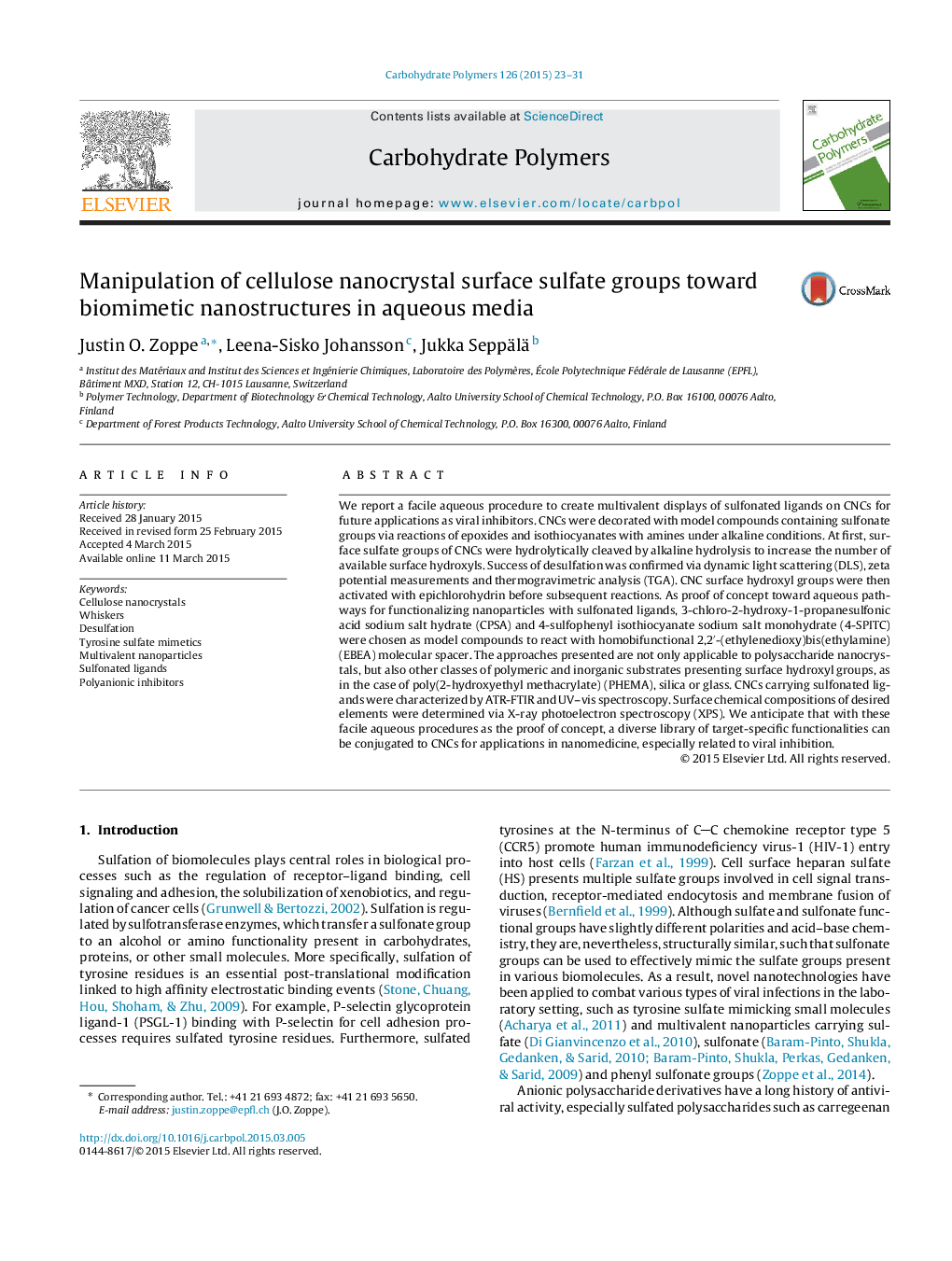| کد مقاله | کد نشریه | سال انتشار | مقاله انگلیسی | نسخه تمام متن |
|---|---|---|---|---|
| 1383603 | 1500632 | 2015 | 9 صفحه PDF | دانلود رایگان |
• Biomimetic nanostructures based on cellulose nanocrystals were synthesized in aqueous media.
• Analysis of desulfated CNCs suggested sulfur of different chemical nature other than anionic sulfate groups.
• Surface structures of biomimetic CNCs were confirmed by ATR-FTIR, XPS and UV-vis spectroscopy.
• This approach can be applied to other nanomaterials bearing surface hydroxyls toward novel polyanionic viral inhibitors.
We report a facile aqueous procedure to create multivalent displays of sulfonated ligands on CNCs for future applications as viral inhibitors. CNCs were decorated with model compounds containing sulfonate groups via reactions of epoxides and isothiocyanates with amines under alkaline conditions. At first, surface sulfate groups of CNCs were hydrolytically cleaved by alkaline hydrolysis to increase the number of available surface hydroxyls. Success of desulfation was confirmed via dynamic light scattering (DLS), zeta potential measurements and thermogravimetric analysis (TGA). CNC surface hydroxyl groups were then activated with epichlorohydrin before subsequent reactions. As proof of concept toward aqueous pathways for functionalizing nanoparticles with sulfonated ligands, 3-chloro-2-hydroxy-1-propanesulfonic acid sodium salt hydrate (CPSA) and 4-sulfophenyl isothiocyanate sodium salt monohydrate (4-SPITC) were chosen as model compounds to react with homobifunctional 2,2′-(ethylenedioxy)bis(ethylamine) (EBEA) molecular spacer. The approaches presented are not only applicable to polysaccharide nanocrystals, but also other classes of polymeric and inorganic substrates presenting surface hydroxyl groups, as in the case of poly(2-hydroxyethyl methacrylate) (PHEMA), silica or glass. CNCs carrying sulfonated ligands were characterized by ATR-FTIR and UV–vis spectroscopy. Surface chemical compositions of desired elements were determined via X-ray photoelectron spectroscopy (XPS). We anticipate that with these facile aqueous procedures as the proof of concept, a diverse library of target-specific functionalities can be conjugated to CNCs for applications in nanomedicine, especially related to viral inhibition.
Journal: Carbohydrate Polymers - Volume 126, 1 August 2015, Pages 23–31
